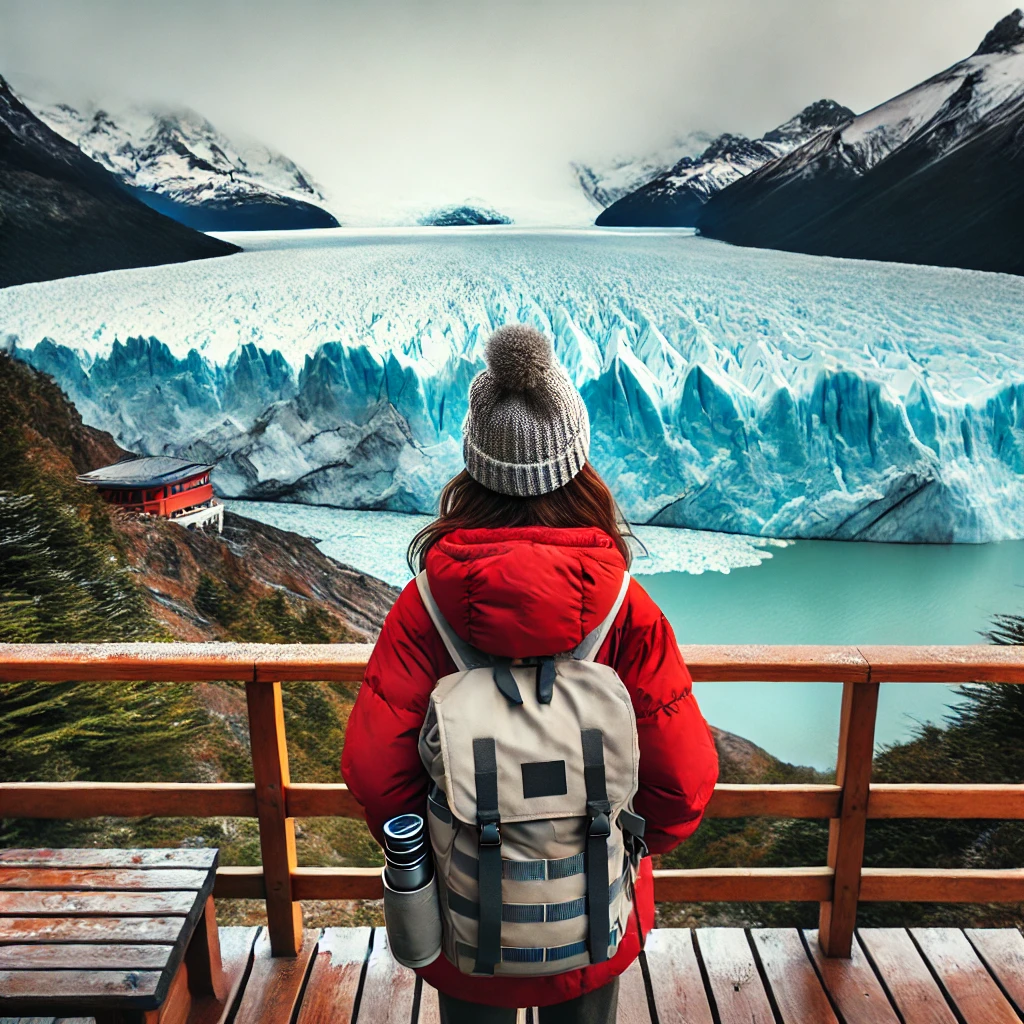ChatGPT:
El Calafate is a charming town in the Santa Cruz province of southern Patagonia, Argentina, located on the southern shore of Lake Argentino. It serves as the gateway to Los Glaciares National Park, a UNESCO World Heritage site, and is renowned for its proximity to the Perito Moreno Glacier, one of the world’s most accessible and spectacular glaciers.
Key Features:
• Perito Moreno Glacier: This iconic glacier, about 80 kilometers (50 miles) from El Calafate, is one of the few in the world that is still advancing. Visitors can experience its grandeur through walkways, boat tours, and even ice trekking.
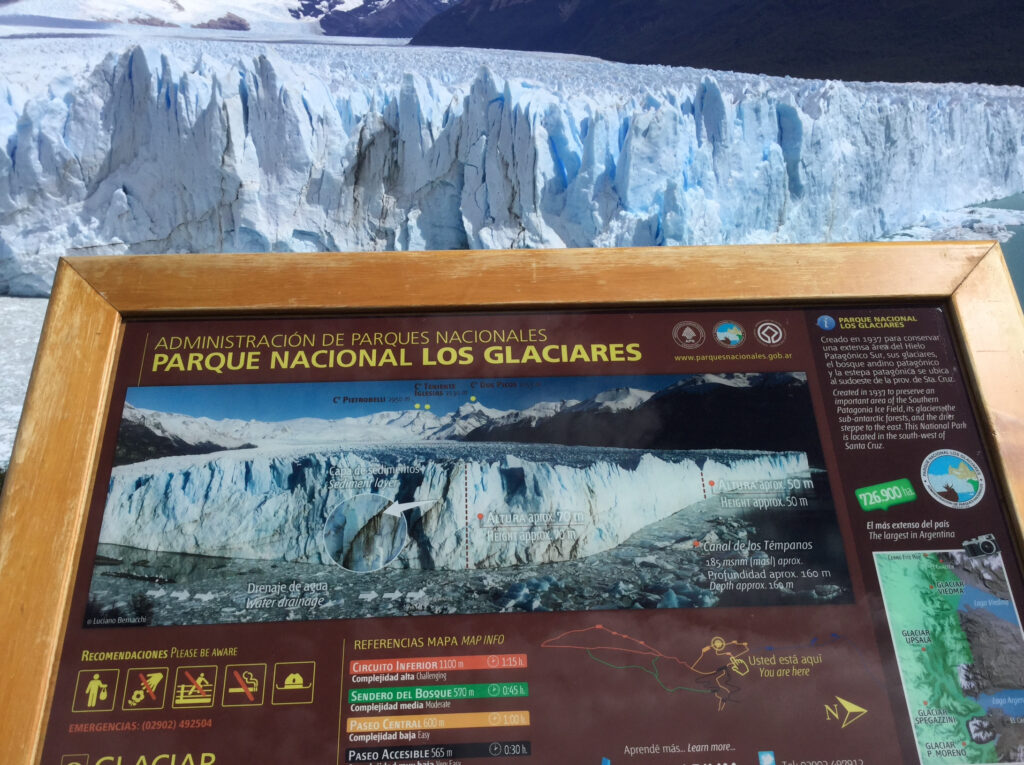
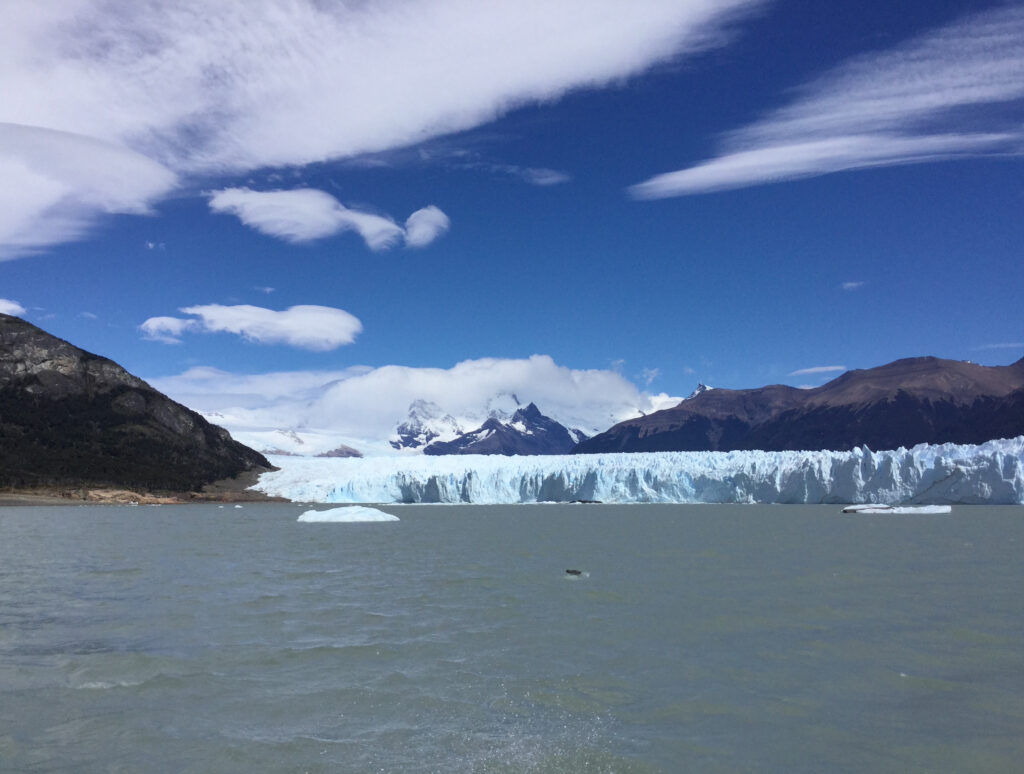
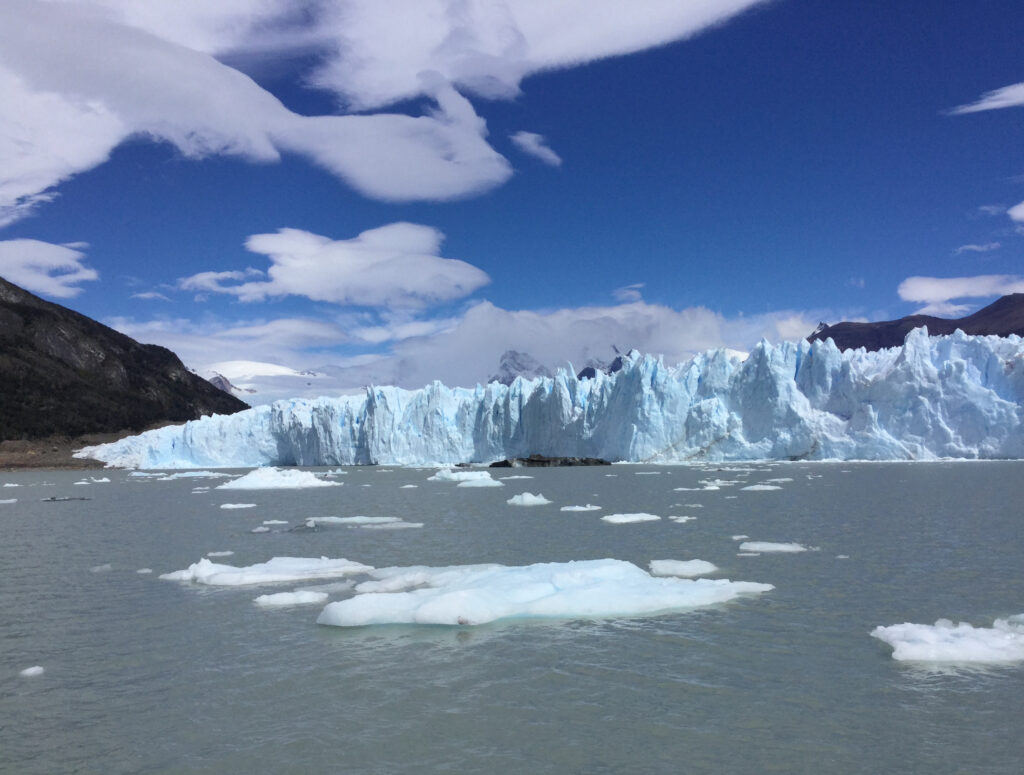
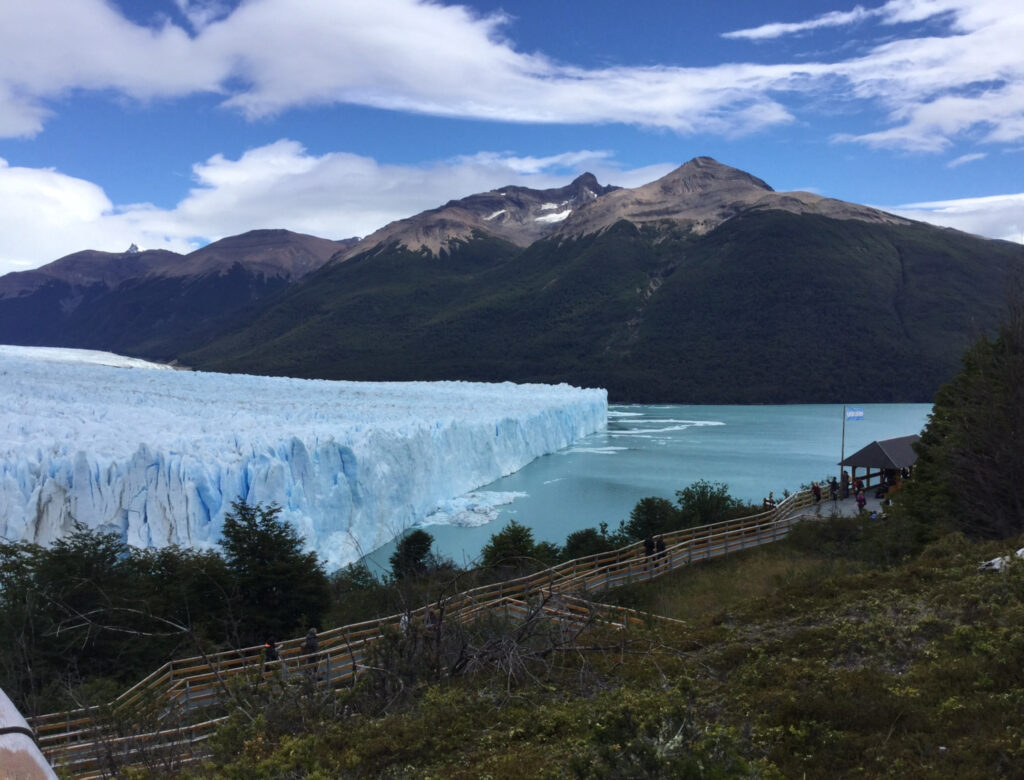
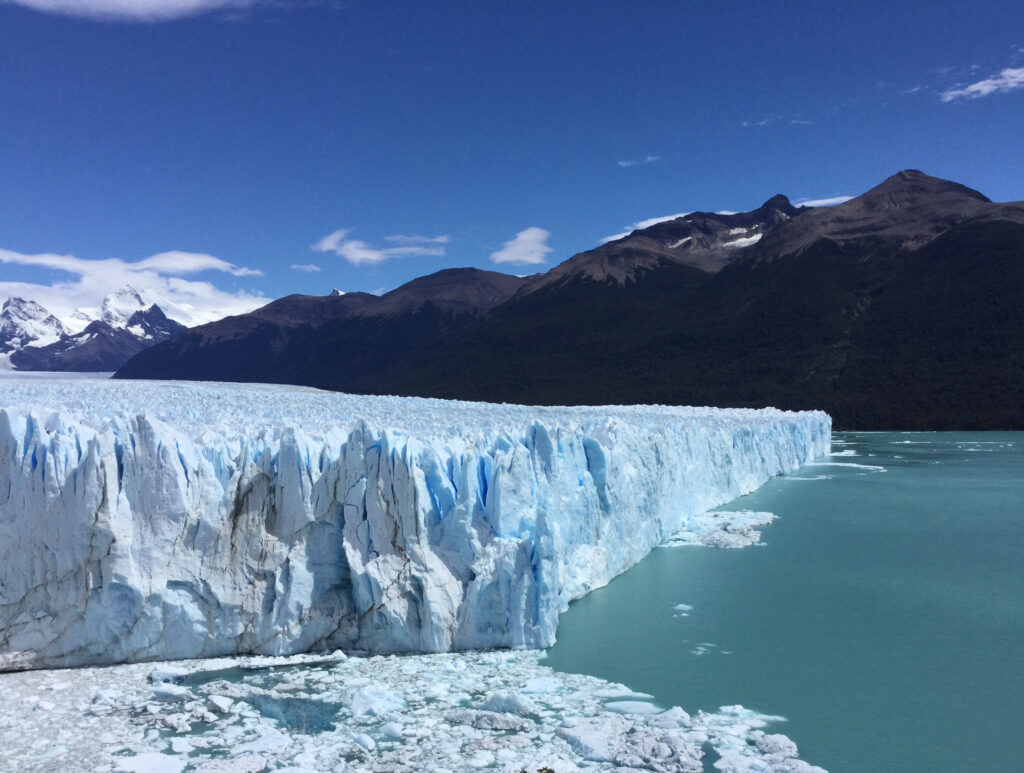
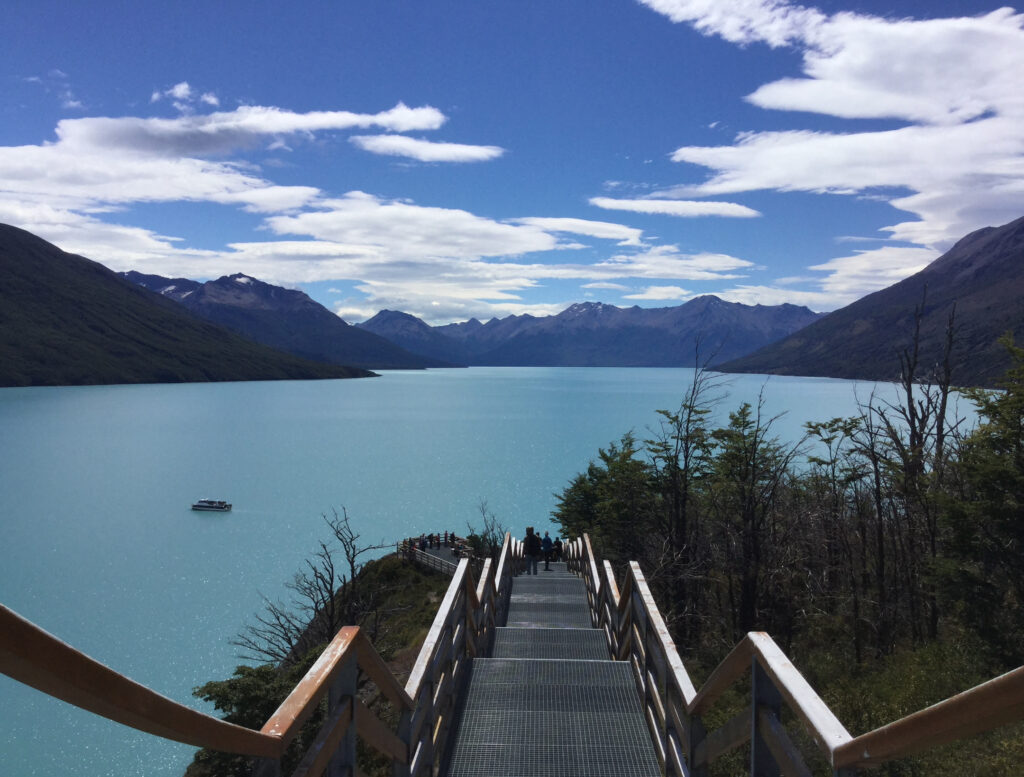
• Lago Argentino: The largest freshwater lake in Argentina, offering breathtaking views and opportunities for kayaking or boat excursions to see icebergs and other glaciers.
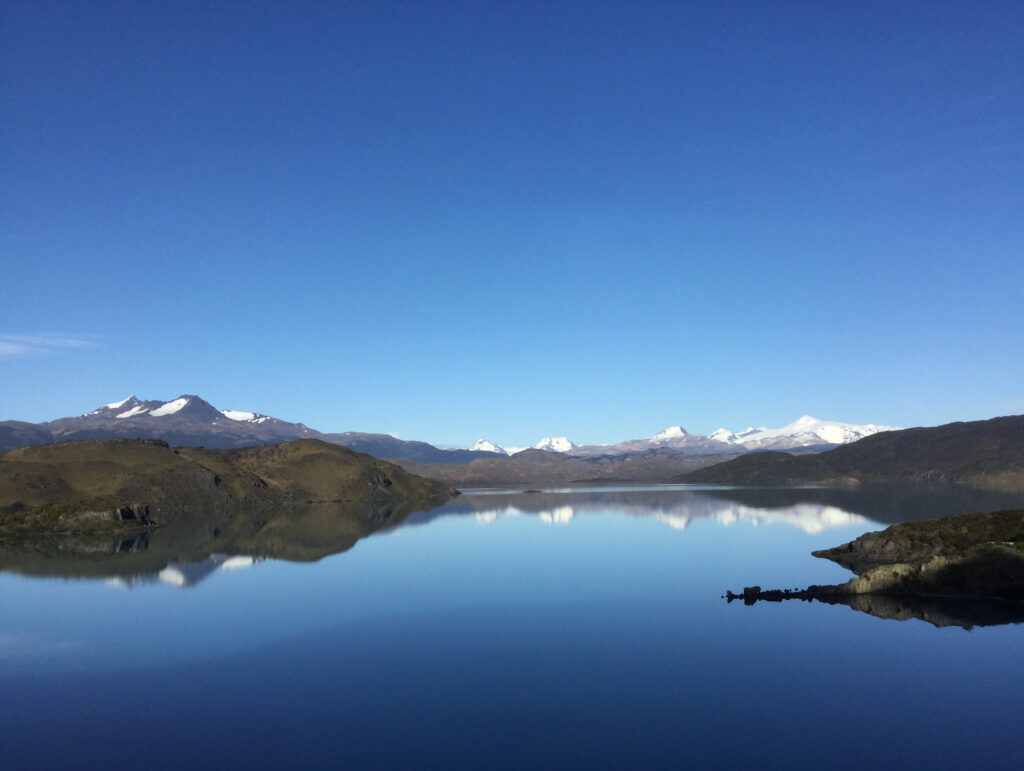
• Nature and Wildlife: The region is home to unique flora and fauna, including guanacos, flamingos, and condors. The arid steppe landscape contrasts dramatically with the icy blue glaciers and turquoise waters.
• Glaciarium Museum: A modern center dedicated to Patagonian glaciers and climate change, featuring exhibits and an ice bar.
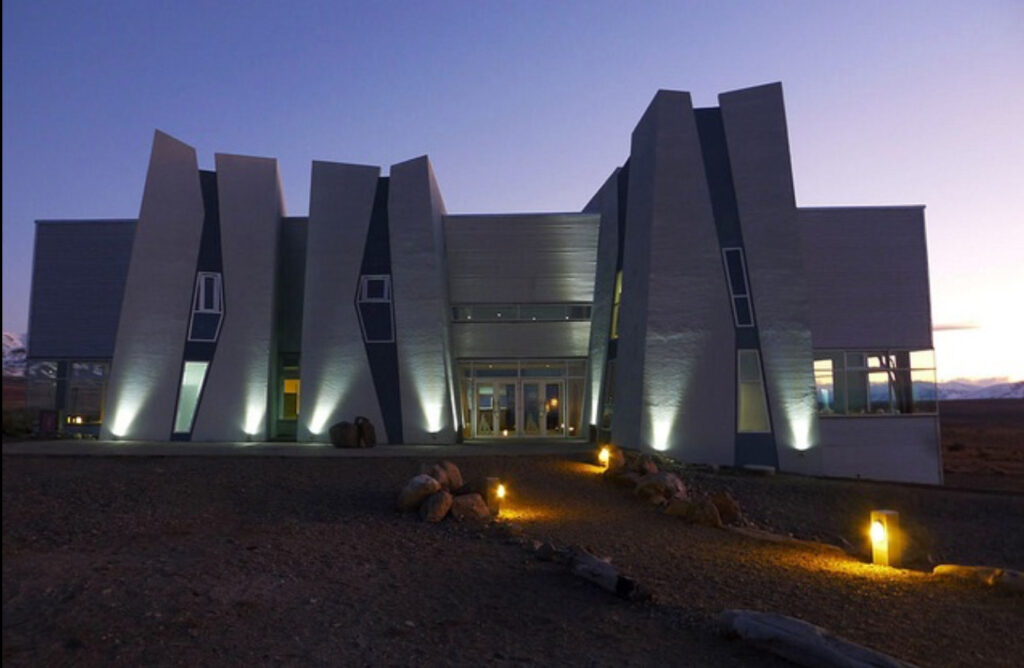
• Cultural Charm: El Calafate is a quaint town with a rustic atmosphere. It has a lively main street (Avenida del Libertador) filled with restaurants, shops, and accommodations. You’ll find local crafts, Patagonian lamb dishes, and regional specialties like calafate berry desserts (from the plant that gave the town its name).
Best Time to Visit:
The peak season is November to March (Patagonian summer) when temperatures are milder, and the area is ideal for outdoor activities.
El Calafate is a must-visit destination for nature lovers, adventurers, and anyone seeking to experience Patagonia’s raw beauty and unique landscapes.
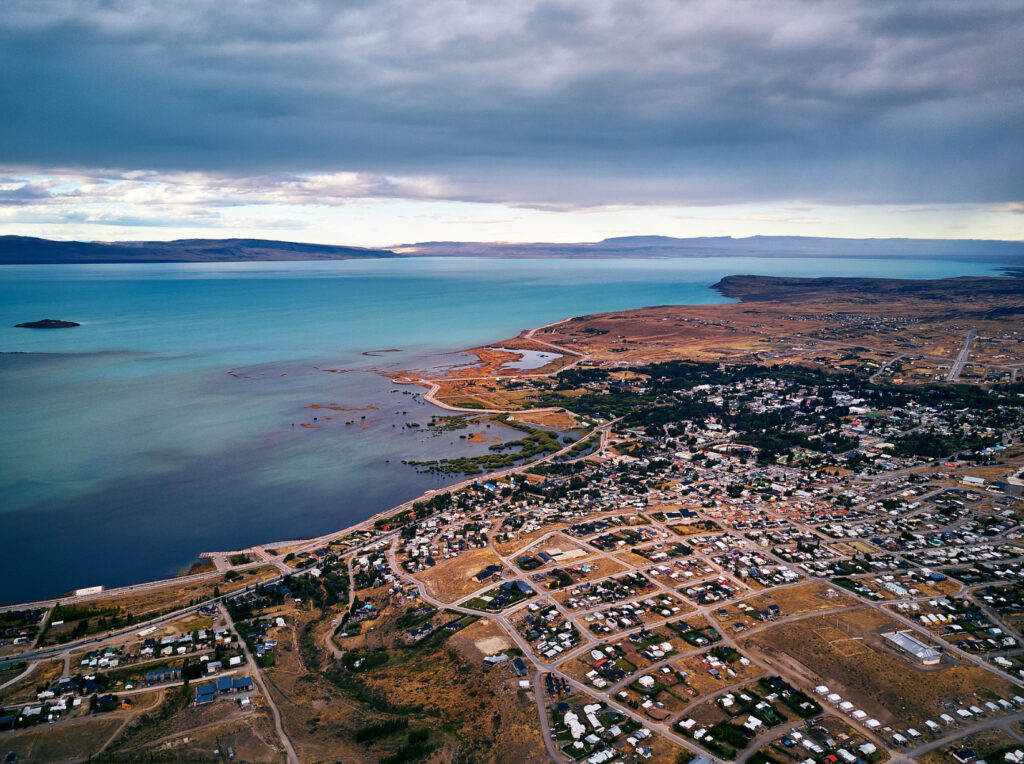
El Calafate, Argentina, has its origins as a small outpost in the remote Patagonian steppe, evolving over the 20th century into a major tourist hub. Its name comes from the calafate bush (Berberis microphylla), a native plant of Patagonia with small yellow flowers and dark blue berries, tied to a local legend that says those who eat the berries are destined to return to Patagonia.
Early History:
• Sheep Ranching and Exploration: In the late 19th and early 20th centuries, the region around El Calafate was primarily used for sheep ranching (estancias). Settlers were drawn to the area for its vast grazing lands.
• Strategic Location: The town was established in 1927 to provide a logistical base for settlers and travelers exploring the Patagonian wilderness, especially near Lake Argentino and the surrounding areas.
• Los Glaciares National Park: Established in 1937, the park’s creation brought increased attention to the region, especially its glaciers. The Perito Moreno Glacier became a central draw.
Development:
• Mid-20th Century: For decades, El Calafate remained a quiet and remote settlement, supported by sheep farming and occasional adventurers. It was only lightly connected to the rest of Argentina, with limited infrastructure and services.
• Tourism Boom (1980s–2000s): The construction of better roads and the opening of the El Calafate International Airport (Aeropuerto Internacional Comandante Armando Tola) in 2000 transformed the town. The airport enabled easier access for domestic and international tourists, significantly boosting the local economy.
• Modern Growth: In response to the influx of visitors, the town expanded rapidly, adding hotels, restaurants, tour operators, and cultural centers. The rise of eco-tourism and adventure tourism further propelled its popularity.
Current Status:
El Calafate today is a thriving tourist destination, offering modern amenities while preserving its rustic charm. It continues to develop sustainably, focusing on promoting the natural beauty of Los Glaciares National Park and Patagonia. The town is a critical stop on Argentina’s tourist circuit, attracting visitors from around the world eager to explore its glaciers and wild landscapes.
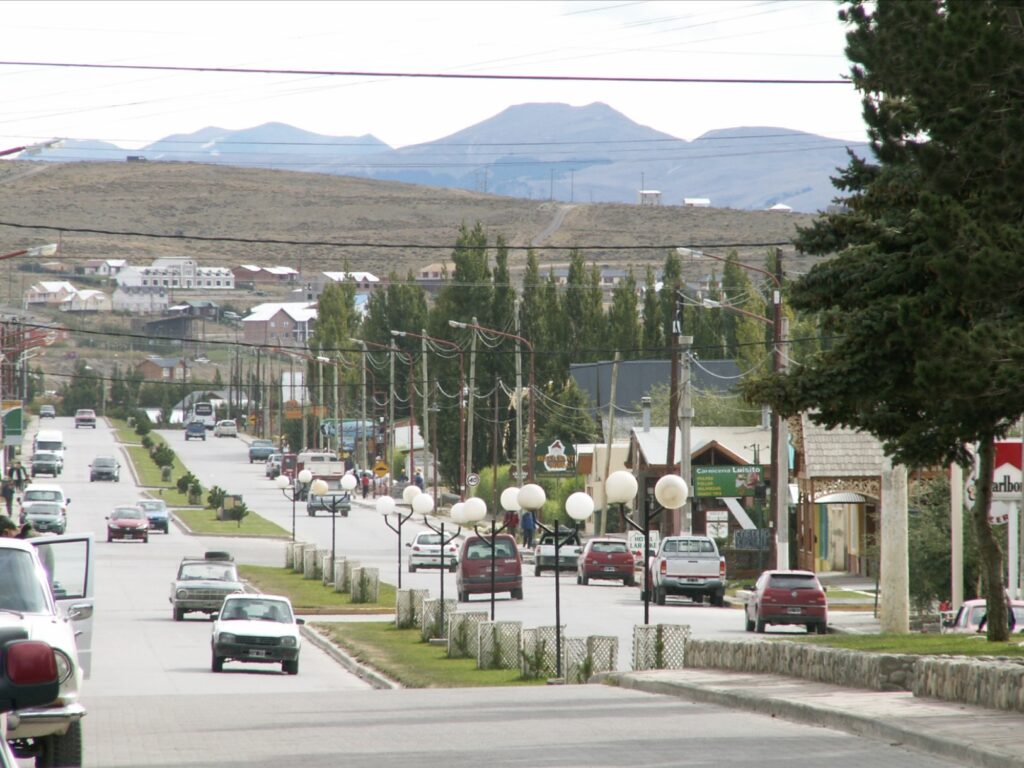
Two-Day Itinerary for Visiting El Calafate and Glaciers
Day 1: Arrival and Exploring El Calafate
Morning
• Breakfast: Start your day with a hearty meal at Viva La Pepa Crepes & Passion, offering delicious crepes filled with local ingredients like Patagonian lamb or calafate berry jam.
• Glaciarium Museum: Visit this state-of-the-art museum to learn about the region’s glaciers, climate change, and glaciology. Don’t miss the GlacioBar, an ice bar experience.
Afternoon
• Lunch: Enjoy a traditional Patagonian dish at La Tablita, famous for its cordero patagónico (slow-roasted Patagonian lamb). Pair it with a local Malbec wine.
• Explore Lago Argentino: Take a leisurely walk along the shores of the turquoise lake. Visit Laguna Nimez Reserve to spot flamingos and other bird species.
Evening
• Dinner: Dine at Mi Rancho, a cozy restaurant offering dishes like grilled trout with calafate sauce or tender guanaco steak.
Day 2: Perito Moreno Glacier Adventure
Morning
• Early Start: Head to Perito Moreno Glacier, about 80 km (50 miles) from El Calafate. Arrive early to beat the crowds.
• Glacier Walkways: Spend time exploring the extensive system of walkways for breathtaking views of the glacier’s icy face and frequent ice calving.
• Optional Boat Safari: Take a boat tour to get up close to the glacier and witness its immense size and beauty.
Afternoon
• Lunch: Enjoy a packed lunch with empanadas and calafate jam pastries from a local bakery, or dine at the on-site café with glacier views.
Optional Adventure
• Mini Trekking on the Glacier: If you’re adventurous, book an ice-trekking tour on the glacier itself, an unforgettable experience.
Evening
• Return to El Calafate:
• Dinner: Wrap up your visit with a meal at Pura Vida Resto Bar, known for its comforting dishes like lamb stew or vegetarian casseroles, paired with local desserts like calafate mousse.
Local Food to Try During Your Visit
• Cordero Patagónico: Patagonian lamb, traditionally slow-roasted over an open fire.
• Trucha Patagónica: Freshly caught trout.
• Calafate Berries: Found in jams, desserts, or sauces.
• Empanadas Patagónicas: Filled with lamb, guanaco, or regional cheeses.
This itinerary balances glacier exploration with El Calafate’s local culture and cuisine, providing an immersive Patagonian experience.
